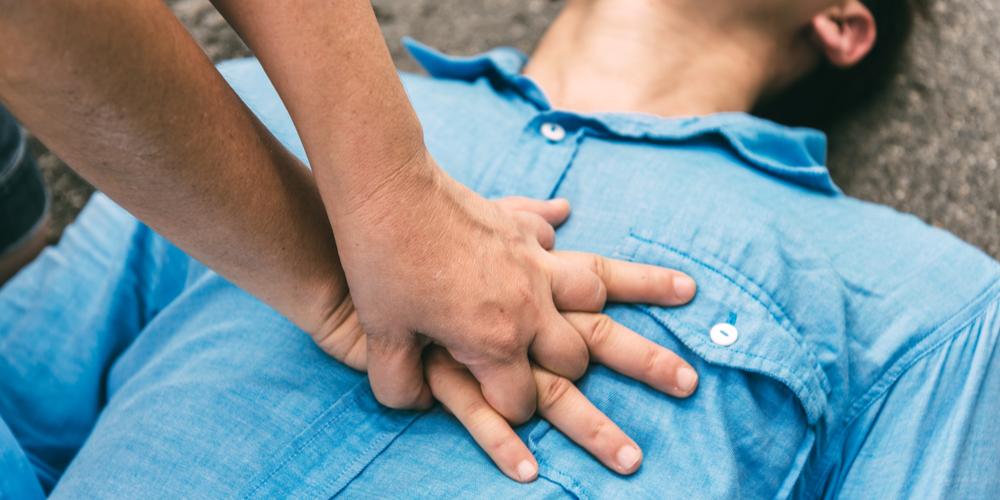
Cardiopulmonary resuscitation, commonly known as CPR, may be a lifesaving action. You will need to carry out CPR if emergency help has not arrived at the scene of an incident and the casualty is unconscious.
How to react in an emergency situation where the casualty is unconscious
If you come across a casualty who appears to be unconscious, you should call the emergency services immediately; try to provide as many details as possible about the condition of the casualty and your location; this will help the paramedics to act as quickly as possible and find you easily. Usually, the phone line operators will be able to advise you and talk you through the CPR process if you are not familiar with it.
CPR steps
Firstly, you should place the casualty on their back and listen for breathing; if there is no sign of breathing you should tilt the head backwards in order to open the airways; you should also remove any obstructions from the casualty’s airway. You should then breathe into the casualty’s mouth and hold their nose; this should last for 2 breaths (roughly 2 seconds).
Following this you should start chest compressions if the casualty is still not breathing. Chest compressions should be fairly firm and quick (in adults the chest should fall approximately 1 ½ to 2 inches); you should press down in the centre of the chest 30 times and then do 2 more breaths; this cycle should continue until emergency help arrives. If there are two people on the scene one may do the breaths while the other does the chest compressions.
CPR in children (children aged above 1)
The CPR process for children is similar to that of adults; however, there are some important differences. Healthcare professionals recommend you give an unconscious child 5 life breaths before starting chest compressions. The chest compressions should involve pressing down on the child’s chest for 1/3 of the depth of the chest. You should give 30 chest compressions followed by 2 breaths; this cycle should be repeated until emergency help arrives.
CPR in infants (children under the age of 1)
If an infant is unconscious you should give them 5 breaths before calling an ambulance. If they are still not breathing start chest compressions using two fingers to press down in the centre of the chest. You should alternate 30 compressions with 2 breaths until emergency help arrives.